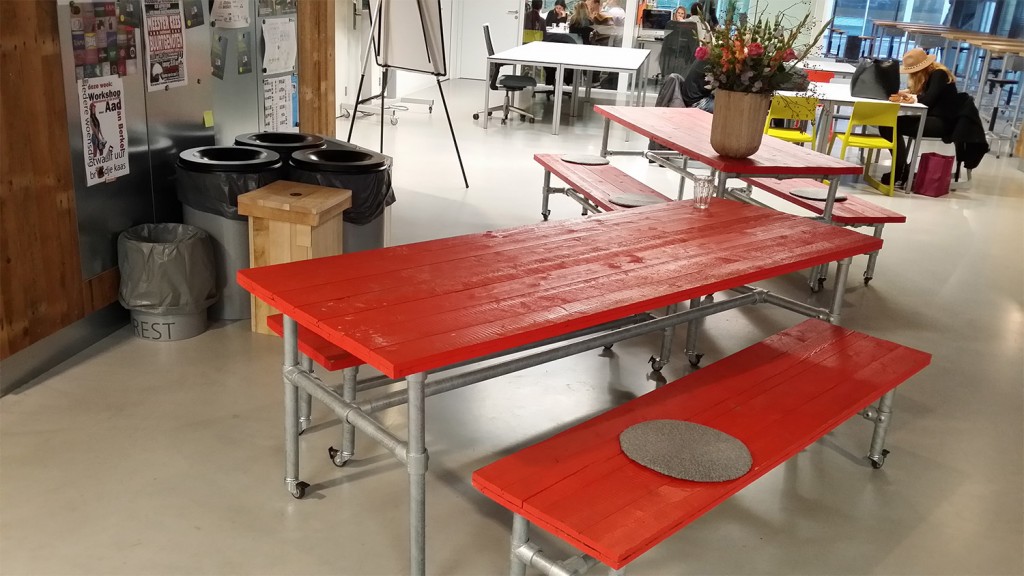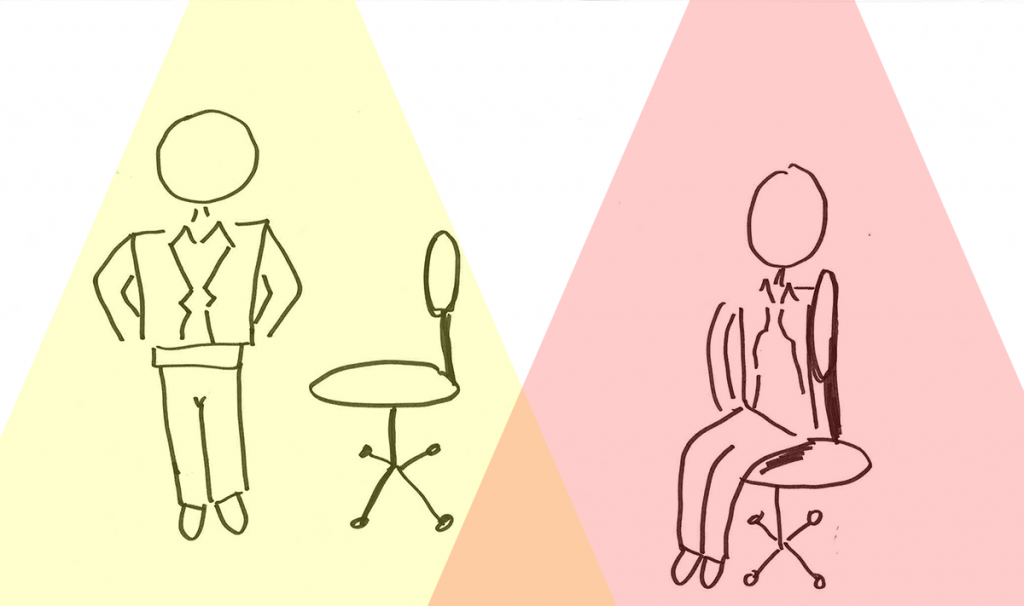This week was a week of many meetings and changes. The first meeting was with Karel Millenaar, a game expert at the Hogeschool van Amsterdam. We exchanged ideas and thoughts about our concepts, on which we weren’t too fond of. We expressed our concerns about our concepts and told him that we wanted to create something that caused people to have autonomy about moving. He told us to think of a funnel in where we would guide the user to do physical activity, but not tell them that they have to do it. He also told us that we had to focus on one piece of the target group and one subject, and start testing as soon as possible. With all of this information we went on to our next meeting.
A few hours later we had a meeting with Jeroen Hoyng, our partner from the NISB. We told him about our concepts and that we were not sure if they would work, and asked him if we could head in another direction. He agreed with us that our target group, desk job working people between the age of 20-30, wouldn’t like the idea too much. Together we came up with a new focus that we are going to use. We will be focussing on: specific workplaces, specific activities, groups of employees, target group and sedentary behavior.
We did just that. The next day we used the MediaLAB as a test setting and behavioral change as a subject, and started testing little changes in the office. The first thing we did is put all the garbage bins in one spot, so that people had to walk to the bins.
The outcome was not that great. We saw that people left their trash on the table more and that people were confused, because the garbage bins changed places. But there were people that still used the bins and they had to walk more; we found out that, by observing them, they didn’t seem bothered to walk there.
The following days were about brainstorming for a new concept, and after spending a lot of time we finally came up with a new concept called Office:Light (working title). The Office:Light is a system implemented into the whole office. Every employee gets a light at his or her desk or in his or her room, which will have a certain color. A sensor in their office-chair is connected to the lamp. The sensor will measure if someone is sitting in the chair or not. After a certain amount of time (for example 1,5 hours) of being seated, the lamp will gradually change of color. This color indicates the time they have been seated, and will give a cue to the employee that he has been sitting for too long.
In this way people will still have the autonomy to decide whether they will change their behavior or not. The light creates awareness, but it doesn’t tell the user to get up. The user will have to decide this on his own. If the light shows that the user has been sitting for too long, the user can decide to keep on working. We expect this will create social pressure in the workspace, for example: one user will see that another user has been seated for too long and will ask him to get off his seat. We think it will work the other way around too. If one user has a good light for a long period of time, their coworkers will praise them about it and ask how she did it.






